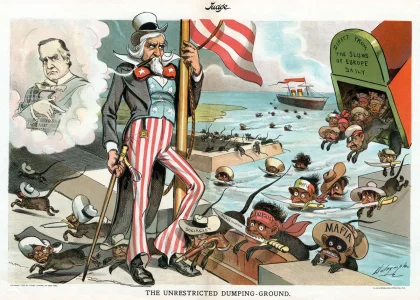So I think there was some slaughter. This doesn't sound like mutual warfare. Just an example from California. I think that there were warlike tribes but that it's way overgeneralized to characterize Native Americans as inherently warlike.
@Billy you make it sound like they just lost at a game of Monopoly. I can find more examples of massacres, but I don't want to take the thread too far down that rabbit hole.
http://www.newsweek.com/2016/08/26/california-native-americans-genocide-490824.html
He spent the next decade trying to compile a record of every single act of deadly violence perpetrated against the Native American people of California during the Gold Rush and its aftermath. Although the resources were scattered, they were plainly available in state and federal archives, as well as in university libraries from Berkeley, California, to Hanover, New Hampshire. There was no attempt to conceal what was done to the Indians in California. “A massacre, a lynching or a whole killing campaign—these things were hidden in plain sight.”
Madley found the murderers acted under the sanction of state and federal government. Feelings of racial superiority were deployed to justify the killing; greed supplied the sense of urgency. California’s statehood, in 1850, came two years after the discovery of gold. This was also the decade when the slaughter reached its apogee. Three hundred thousand came seeking gold. It happened that many of the goldfields in Northern California lay in the ancestral lands of tribes like the Karuk, the Wintu and the Miwok—all of which remain in California, diminished survivors of an unwholesome past.
It was a widely held belief in 19th-century California that all of the Indians
had to be exterminated. Reported the
Daily Alta California, “Whites are becoming impressed with the belief that it will be absolutely necessary to exterminate the savages before they can labor much longer in the mines with security.”
The killing of Indians was performed for reasons that seem, today, pathetically feeble. Madley describes how one vigilante gang, called the California Blades, set about destroying Nisenan villages over several missing mules.
The United States Army often participated in the mass killing, making Capitol Hill complicit in what was happening in the goldfields of the Sierra Nevada and elsewhere in California. In the winter of 1849, Indians wanting freedom killed Andrew Kelsey and Charles Stone, two slavers in what is today Lake County. In revenge, federal infantry and cavalry detachments attacked a village at Clear Lake. On May 15, 1850, they “poured in destructive fire indiscriminately upon men, women and children,” according to one account. As many as 800 members of the Pomo tribe were killed at what has come to be known as Bloody Island. “It took them four or five days to gather up the dead,” one survivor remembered.
A village of Yokayas on the Russian River was attacked by U.S. troops just days later, in what their commander deemed “a perfect slaughter pen.” Yokaya casualties may have been as high as 100. The U.S. troops lost no men, though two suffered wounds.
Much of the slaughter was carried out by state militias, which enjoyed financial support from both Sacramento and Washington, D.C. In Round Valley, north of San Francisco, the Eel River Rangers were so prolific in their murder of the Yuki that even some white observers became alarmed. “The killing of Indians is a daily occurrence,” reported California’s head of Indian affairs. “If some means be not speedily devised, by which the unauthorized expeditions that are constantly out in search of them can be restrained, they will soon be exterminated.”


